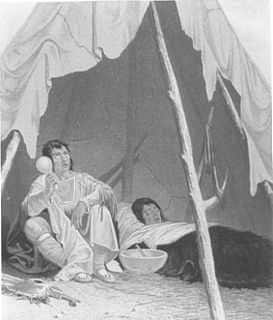 W
WThe population figure of indigenous peoples of the Americas before the 1492 Spanish voyage of Christopher Columbus has proven difficult to establish. Scholars rely on archaeological data and written records from European settlers. Most scholars writing at the end of the 19th century estimated that the pre-Columbian population was as low as 10 million; by the end of the 20th century most scholars gravitated to a middle estimate of around 50 million, with some historians arguing for an estimate of 100 million or more. Contact with the Europeans led to the European colonization of the Americas, in which millions of immigrants from Europe eventually settled in the Americas.
 W
WThe Bear River Massacre, or the Battle of Bear River or Massacre at Boa Ogoi, took place in present-day Franklin County, Idaho on January 29, 1863. After years of skirmishes and food raids on farms and ranches, the United States Army attacked a Shoshone encampment, gathered at the confluence of the Bear River and Battle Creek in what was then southeastern Washington Territory, near the present-day city of Preston. Colonel Patrick Edward Connor led a detachment of California Volunteers as part of the Bear River Expedition against Shoshone tribal chief Bear Hunter. Hundreds of Shoshone men, women and children were killed near their lodges; the number of Shoshone victims reported by local settlers was higher than that reported by soldiers.
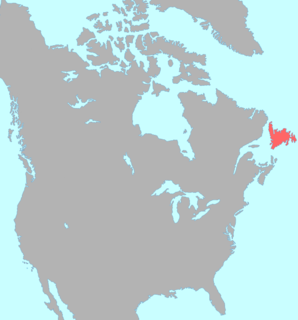 W
WThe Beothuk was a group of indigenous people living on the island of Newfoundland.
 W
WThe Acoma Massacre refers to the punitive expedition by Spanish conquistadors at Acoma Pueblo in January 1599 that resulted in the deaths of around 500 Acoma men killed in a three-day battle, along with 300 women and children. Of the remaining Acoma who survived the attack, many were sentenced to 20-year enslavement and 24 suffered amputations.
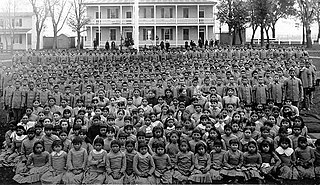 W
WNative American boarding schools, also known as Indian Residential Schools, were established in the United States during the late 19th and mid 20th centuries with a primary objective of assimilating Native American children and youth into Euro-American culture, while at the same time providing a basic education in Euro-American subject matters. These boarding schools were first established by Christian missionaries of various denominations, who often started schools on reservations, especially in the lightly populated areas of the West. The government paid religious orders to provide basic education to Native American children on reservations in the late 19th and early 20th centuries, with the last residential schools closing as late as 1973. The Bureau of Indian Affairs (BIA) founded additional boarding schools based on the assimilation model of the off-reservation Carlisle Indian Industrial School.
 W
WThe American Indian Wars, also known as the American Frontier Wars, the First Nations Wars in Canada and the Indian Wars is the collective name for the various armed conflicts that were fought by European governments and colonists, and later by the United States and Canadian governments and American and Canadian settlers, against various American Indian and First Nation tribes. These conflicts occurred in North America from the time of the earliest colonial settlements in the 17th century until the early 20th century. The various wars resulted from a wide variety of factors, including cultural clashes, land disputes, and criminal acts committed. The European powers and their colonies also enlisted Indian tribes to help them conduct warfare against each other's colonial settlements. After the American Revolution, many conflicts were local to specific states or regions and frequently involved disputes over land use; some entailed cycles of violent reprisal.
 W
WThe Apalachee massacre was a series of raids by English colonists from the Province of Carolina and their Indian allies against a largely peaceful population of Apalachee Indians in northern Spanish Florida that took place in 1704, during Queen Anne's War. Against limited Spanish and Indian resistance, a network of missions was destroyed; most of the population either was killed or captured, fled to larger Spanish and French outposts, or voluntarily joined the English.
 W
WIn Canada, the Indian residential school system was a network of boarding schools for Indigenous peoples. The network was funded by the Canadian government's Department of Indian Affairs and administered by Christian churches. The school system was created for the purpose of removing Indigenous children from the influence of their own culture and assimilating them into the dominant Canadian culture, "to kill the Indian in the child." Over the course of the system's more than hundred-year existence, about 30 percent of Indigenous children were placed in residential schools nationally. The number of school-related deaths remains unknown due to an incomplete historical record, though estimates range from 3,200 to upwards of 6,000.
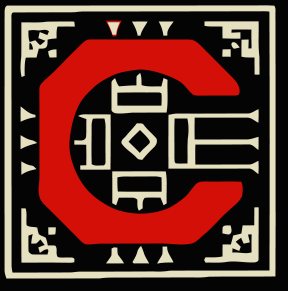 W
WThe United States Indian Industrial School in Carlisle, Pennsylvania, generally known as Carlisle Indian Industrial School, was the flagship Indian boarding school in the United States from 1879 through 1918. All the school's property, known as the Carlisle Barracks, is now part of the U.S. Army War College.
 W
WCerro Rico, Cerro Potosí or Sumaq Urqu is a mountain in the Andes near the Bolivian city of Potosí. Cerro Rico, which is popularly conceived of as being "made of" silver ore, is famous for providing vast quantities of silver for Spain during the period of the New World Spanish Empire. It is estimated that eighty-five percent of the silver produced in the central Andes during this time came from Cerro Rico. As a result of mining operations in the mountain, the city of Potosí became one of the largest cities in the New World.
 W
WFort Neoheroka, or Nooherooka, is the name of a stronghold constructed in what is now Greene County, North Carolina by the Tuscarora tribe during the Tuscarora War of 1711–1715. In March 1713, the fort was besieged and ultimately attacked by a colonial force consisting of an army from the neighboring Province of South Carolina, under the command of Colonel James Moore and made up mainly of Indians including Yamasee, Apalachee, Catawba, and Cherokee. The 1713 siege lasted for more than three weeks, from around March 1 to March 22, 1713. Hundreds of men, women and children were burned to death in a fire that destroyed the fort. Approximately 170 more were killed outside the fort while approximately 400 were taken to South Carolina where they were sold into slavery. The defeat of the Tuscaroras, once the most powerful Indian tribe in the Province of North Carolina, opened up North Carolina's interior to further settlement. The supremacy of the Tuscaroras in the colony was broken forever, and most moved north to live among the Iroquois. On July 17, 2009, the Fort Neoheroka Site was added to the National Register of Historic Places.
 W
WMabila was a small fortress town known to the paramount chief Tuskaloosa in 1540, in a region of present-day central Alabama. The exact location has been debated for centuries, but southwest of present-day Selma, Alabama, is one possibility.
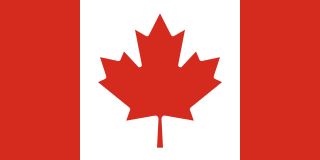 W
WMaplewashing or maple washing is a term coined by journalist Toronto-based writer and producer, Luke Savage, in his audio essay aired on the September 7, 2016 CBC Radio s The 180. In his June 2017 webpage post, "Accounting for Histories: 150 Years of Canadian Maple Washing", Savage used the term to confront the "narrative of Canadian exceptionalism", referring to a perceived tendency by the media to perpetuate an image that Canada has a "superior" grasp in dealing with social issues as compared to other countries. The term implies a sanitization and concealment of the undesirable qualities of the country and its history. Savage said that there was a "growing smugness in Canadians" —he believed it was time to end the "practice of maple-washing once and for all." As a student, Savage was editor-in-chief of The Varsity. He has written over 160 articles for the Jacobin magazine, and has had his work published in Maisonneuve, The Tyee, and NOW. Savage is a producer and staff writer for PressProgress, which was launched by the Ottawa-based Broadbent Institute in 2013. He says that "Canadians have small country syndrome."
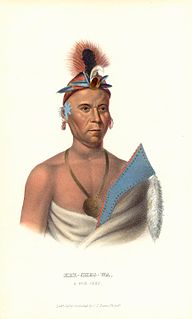 W
WThe Meskwaki are a Native American people often known by Western society as the Fox tribe. They have been closely linked to the Sauk people of the same language family. In the Meskwaki language, the Meskwaki call themselves Meshkwahkihaki, which means "the Red-Earths", related to their creation story. Historically their homelands were in the Great Lakes region. The tribe coalesced in the St. Lawrence River Valley in present-day Ontario, Canada. Under French colonial pressures, it migrated to the southern side of the Great Lakes to territory that much later was organized by European Americans as the states of Michigan, Wisconsin, Illinois, and Iowa.
 W
WThe Pequot War was an armed conflict that took place between 1636 and 1638 in New England between the Pequot tribe and an alliance of the colonists of the Massachusetts Bay, Plymouth, and Saybrook colonies and their allies from the Narragansett and Mohegan tribes. The war concluded with the decisive defeat of the Pequots. At the end, about 700 Pequots had been killed or taken into captivity. Hundreds of prisoners were sold into slavery to the West Indies; other survivors were dispersed as captives to the victorious tribes.
 W
WPotosí, known as Villa Imperial de Potosí in the colonial period, is the capital city and a municipality of the Department of Potosí in Bolivia. It is one of the highest cities in the world at a nominal 4,090 metres (13,420 ft). For centuries, it was the location of the Spanish colonial silver mint.
 W
WThe Sand Creek massacre was a massacre of Cheyenne and Arapaho people by the U.S. Army in the American Indian Wars that occurred on November 29, 1864, when a 675-man force of the Third Colorado Cavalry under the command of U.S. Army Colonel John Chivington attacked and destroyed a village of Cheyenne and Arapaho people in southeastern Colorado Territory, killing and mutilating an estimated 70–500 Native Americans, about two-thirds of whom were women and children. The location has been designated the Sand Creek Massacre National Historic Site and is administered by the National Park Service. This was part of a series of events known as the Colorado War and was preceded by the Hungate massacre.
 W
WThe Spanish conquest of El Salvador was the campaign undertaken by the Spanish conquistadores against the Late Postclassic Mesoamerican polities in the territory that is now incorporated into the modern Central American nation of El Salvador. El Salvador is the smallest country in Central America, and is dominated by two mountain ranges running east–west. Its climate is tropical, and the year is divided into wet and dry seasons. Before the conquest the country formed a part of the Mesoamerican cultural region, and was inhabited by a number of indigenous peoples, including the Pipil, the Lenca, the Xinca, and Maya. Native weaponry consisted of spears, bows and arrows, and wooden swords with inset stone blades; they wore padded cotton armour.
 W
WThe 'Battle' of Cajamarca also spelled Cajamalca was the ambush and seizure of the Inca ruler Atahualpa by a small Spanish force led by Francisco Pizarro, on November 16, 1532. The Spanish killed thousands of Atahualpa's counselors, commanders, and unarmed attendants in the great plaza of Cajamarca, and caused his armed host outside the town to flee. The capture of Atahualpa marked the opening stage of the conquest of the pre-Columbian civilization of Peru.
 W
WThe California Genocide consisted of actions from the 18th to late 19th century by the Spanish, Mexican and especially United States federal, state, and local governments that resulted in the dramatic decrease of the indigenous population of California. Between 1849 and 1870—following the U.S. occupation of California in 1846—it is conservatively estimated that American colonists murdered some 9,500 California Natives, and acts of enslavement, kidnapping, rape, child separation and displacement were widespread, encouraged, carried out by and tolerated by state authorities and militias.
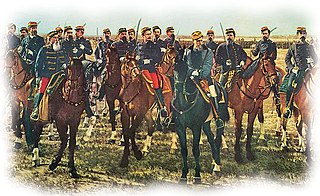 W
WThe Conquest of the Desert was an Argentine military campaign directed mainly by General Julio Argentino Roca in the 1870s with the intent to establish dominance over the Patagonian Desert, inhabited primarily by indigenous peoples. Under General Roca, the Conquest of the Desert extended Argentine power into Patagonia and ended the possibility of Chilean expansion there.
 W
WThe Ghost Dance War was an armed conflict in the United States between the Lakota Sioux and the United States government from 1890 until 1891. It involved the Wounded Knee Massacre wherein the 7th Cavalry massacred around 300 unarmed Lakota Sioux, primarily women, children, and elders, at Wounded Knee on December 29, 1890. The Ghost Dance War ended when Sioux leader Kicking Bear surrendered on January 15, 1891.
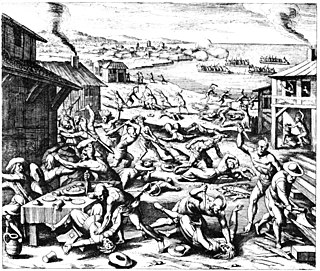 W
WIn the history of the European colonization of the Americas, an atrocity termed "Indian massacre" is a specific incident wherein a group of people deliberately kill a significant number of relatively defenseless people — usually civilian noncombatants — or to the summary execution of prisoners-of-war. The term may refer to either the killing of people of European descent by Native Americans and First Nations or to the killing of Native American and First Nation peoples by people of European descent and/or the military.
 W
WIndian removal was a forced migration in the 19th century whereby Native Americans were forced by the United States government to leave their ancestral homelands in the eastern United States to lands west of the Mississippi River, specifically to a designated Indian Territory. The Indian Removal Act, the key law that forced the removal of the Indians, was signed by Andrew Jackson in 1830. Jackson took a hard line on Indian removal, but the law was put into effect primarily under the Martin van Buren administration.
 W
WIndian removals in Indiana followed a series of the land cession treaties made between 1795 and 1846 that led to the removal of most of the native tribes from Indiana. Some of the removals occurred prior to 1830, but most took place between 1830 and 1846. The Lenape (Delaware), Piankashaw, Kickapoo, Wea, and Shawnee were removed in the 1820s and 1830s, but the Potawatomi and Miami removals in the 1830s and 1840s were more gradual and incomplete, and not all of Indiana's Native Americans voluntarily left the state. The most well-known resistance effort in Indiana was the forced removal of Chief Menominee and his Yellow River band of Potawatomi in what became known as the Potawatomi Trail of Death in 1838, in which 859 Potawatomi were removed to Kansas and at least forty died on the journey west. The Miami were the last to be removed from Indiana, but tribal leaders delayed the process until 1846. Many of the Miami were permitted to remain on land allotments guaranteed to them under the Treaty of St. Mary's (1818) and subsequent treaties.
 W
WThe Long Walk of the Navajo, also called the Long Walk to Bosque Redondo, refers to the 1864 deportation and attempted ethnic cleansing of the Navajo people by the United States federal government. Navajos were forced to walk from their land in what is now Arizona to eastern New Mexico. Some 53 different forced marches occurred between August 1864 and the end of 1866. Some anthropologists claim that the "collective trauma of the Long Walk...is critical to contemporary Navajos' sense of identity as a people".
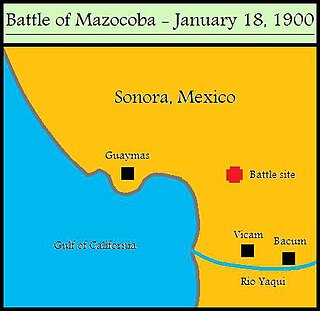 W
WThe Battle of Mazocoba, or the Mazocoba massacre, was a major engagement of the Yaqui Wars that was fought in Sonora, Mexico. On January 18, 1900, a Mexican Army expedition encountered hundreds of Yaqui renegades about twenty miles east of Guaymas. During the battle that followed, several hundred people were killed or wounded and over 1,000 Yaquis were taken prisoner.
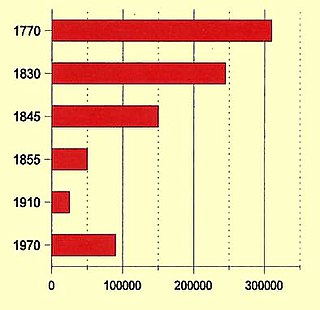 W
WThe Population of Native California refers to the population of Indigenous peoples of California. Estimates prior to and after European contact have varied substantially. Pre-contact estimates range from 133,000 to 705,000 with some recent scholars concluding that these estimates are low.
 W
WThe Potawatomi Trail of Death was the forced removal by militia in 1838 of some 859 members of the Potawatomi nation from Indiana to reservation lands in what is now eastern Kansas. The march began at Twin Lakes, Indiana on September 4, 1838, and ended on November 4, 1838, along the western bank of the Osage River, near present-day Osawatomie, Kansas. During the journey of approximately 660 miles (1,060 km) over 61 days, more than 40 persons died, most of them children. It marked the single largest Indian removal in Indiana history.
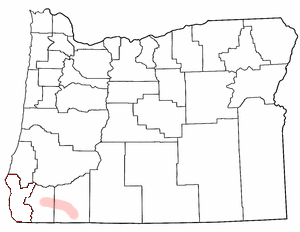 W
WThe Rogue River Wars were an armed conflict in 1855–1856 between the U.S. Army, local militias and volunteers, and the Native American tribes commonly grouped under the designation of Rogue River Indians, in the Rogue River Valley area of what today is southern Oregon. The conflict designation usually includes only the hostilities that took place during 1855–1856, but there had been numerous previous skirmishes, as early as the 1830s, between European-American settlers and the Native Americans, over territory and resources.
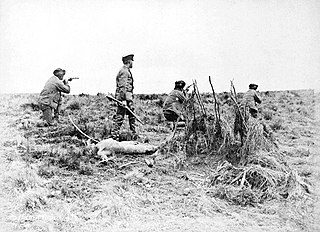 W
WThe Selk'nam genocide was the genocide of the Selk'nam people, one of three indigenous tribes populating the Tierra del Fuego in South America, from the second half of the 19th to the early 20th century. The genocide spanned a period of between ten and fifteen years. The Selk'nam, which had an estimated population of 4,000 people, saw their numbers reduced to 500.
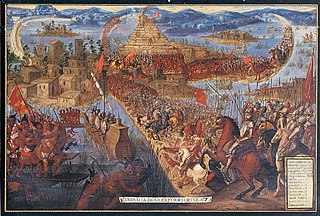 W
WThe Fall of Tenochtitlan, the capital of the Aztec Empire, was a decisive event in the Spanish conquest of the Aztec Empire. It occurred in 1521 following extensive manipulation of local factions and exploitation of pre-existing divisions by Spanish conquistador Hernán Cortés, who was aided by the support of his indigenous allies and his interpreter and companion La Malinche.
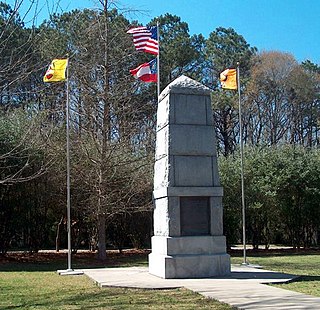 W
WThe Trail of Tears was a series of forced relocations of approximately 60,000 Native Americans between 1830 and 1850 by the United States government. Members of the Cherokee, Muscogee (Creek), Seminole, Chickasaw, and Choctaw nations were forcibly removed from their ancestral homelands in the Southeastern United States to areas to the west of the Mississippi River that had been designated as 'Indian Territory'. The forced relocations were carried out by government authorities following the passage of the Indian Removal Act in 1830. The Cherokee removal in 1838 was brought on by the discovery of gold near Dahlonega, Georgia in 1828, resulting in the Georgia Gold Rush.
 W
WThe Wounded Knee Massacre, also known as the Battle of Wounded Knee, was a domestic massacre of nearly three hundred Lakota people, by soldiers of the United States Army. It occurred on December 29, 1890, near Wounded Knee Creek on the Lakota Pine Ridge Indian Reservation in the U.S. state of South Dakota, following a botched attempt to disarm the Lakota camp. The previous day, a detachment of the U.S. 7th Cavalry Regiment commanded by Major Samuel M. Whitside intercepted Spotted Elk's band of Miniconjou Lakota and 38 Hunkpapa Lakota near Porcupine Butte and escorted them 5 miles (8.0 km) westward to Wounded Knee Creek, where they made camp. The remainder of the 7th Cavalry Regiment, led by Colonel James W. Forsyth, arrived and surrounded the encampment. The regiment was supported by a battery of four Hotchkiss mountain guns.
 W
WThe Yaqui or Hiaki or Yoeme are a Uto-Aztecan speaking indigenous people of Mexico who inhabit the valley of the Río Yaqui in the Mexican state of Sonora and the Southwestern United States. They also have communities in Chihuahua and Durango. The Pascua Yaqui Tribe is based in Tucson, Arizona. Yaqui people live elsewhere in the United States, especially California, Arizona and Nevada.
 W
WThe Yaqui Wars, were a series of armed conflicts between New Spain, and the later Mexican Republic, against the Yaqui Indians. The period began in 1533 and lasted until 1929. The Yaqui Wars, along with the Caste War against the Maya, were the last conflicts of the centuries long Mexican Indian Wars. Over the course of nearly 400 years, the Spanish and the Mexicans repeatedly launched military campaigns into Yaqui territory which resulted in several serious battles and massacres.
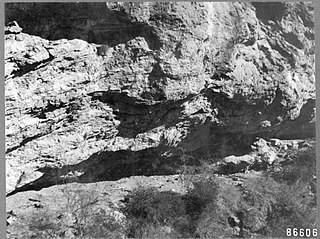 W
WThe Yavapai Wars, or the Tonto Wars, were a series of armed conflicts between the Yavapai and Tonto tribes against the United States in Arizona. The period began no later than 1861, with the arrival of American settlers on Yavapai and Tonto land. At the time, the Yavapai were considered a band of the Western Apache people due to their close relationship with tribes such as the Tonto and Pinal. The war culminated with the Yavapai's removal from the Camp Verde Reservation to San Carlos on February 27, 1875, an event now known as Exodus Day.